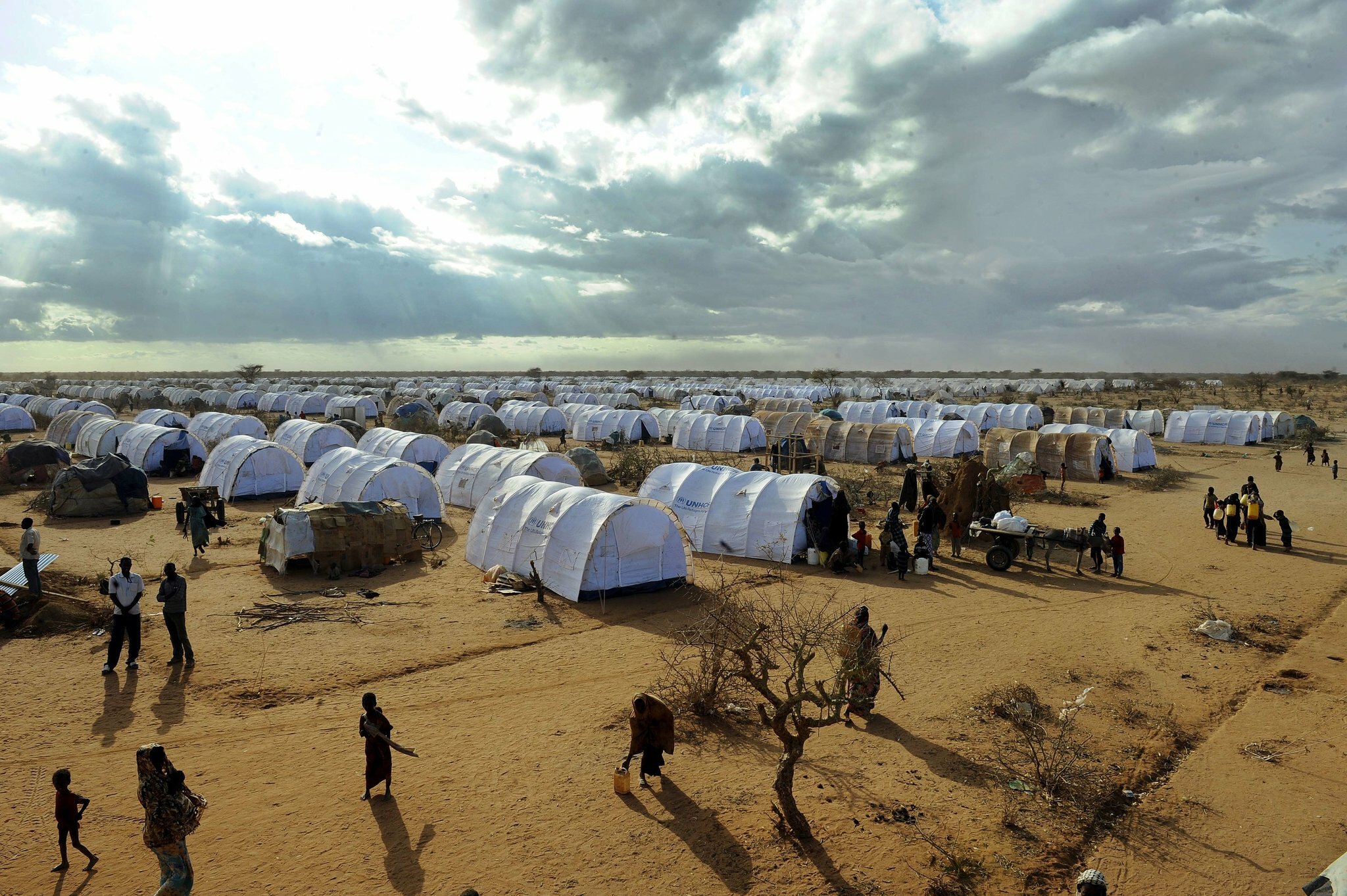The Challenges of ‘Higher-Education Emergencies’

The Dadaab refugee camp in Kenya near the Somali border, where an experiment in online education with two students using a Coursera program met with technological challenges, as well as cultural and linguistic ones. Credit Tony Karumba/Agence France-Presse — Getty Images
WASHINGTON — One narrative that has driven widespread interest in free online courses known as MOOCs is that they can help educate the world. But critics say that the courses mostly draw students who already hold traditional degrees.
When Coursera, the largest provider of MOOCs, published a blog post about how a professor had used one of its online courses to teach refugees near the Kenya-Somalia border, it sounded to some like a satire of Silicon Valley’s naïve techno-optimism: Hundreds of thousands of devastated Africans stranded in a war zone? MOOCs to the rescue!
Still, details of the experiment paint a more nuanced picture, highlighting the challenges that MOOC providers face in trying to make sophisticated online courses work in deprived settings.
Barbara Moser-Mercer, a cognitive psychologist at the University of Geneva, ran the refugee experiment and wrote Coursera’s blog post about it. But in an interview, as well as a more formal article she wrote about the experiment for a European conference on MOOCs, she expanded on the logistical issues encountered.
Ms. Moser-Mercer’s background is translation and interpretation; she still sometimes serves as an interpreter for the United Nations. Mostly, though, she works in conflict zones. She is founder and director of InZone, a group that tries to intervene in “higher-education emergencies.”
Professor Moser-Mercer downloaded lecture videos and quizzes from a Coursera course to a USB drive and brought them to Dadaab, one of the world’s largest refugee camps. There she handed the drive to officials at a compound run by the Office of the United Nations High Commissioner for Refugees, which was one of the few places around that had computers.
Some refugees have day jobs in the United Nations compound, and Ms. Moser-Mercer arranged to have officials let two men watch videos and complete assignments when they were not working. Their time was limited to lunch breaks, since an armed convoy would leave promptly at the end of each day to take them back to the camp.
The two men, whom she referred to as Hassan and Juma, already had degrees from two-year colleges in their home countries. Still, they weren’t interested in taking an online course merely for their own edification; they wanted a certificate. Ms. Moser-Mercer says that attitude is common in places like Dadaab.
Meeting Coursera’s requirements for a certificate made things harder. Hassan and Juma had to take quizzes that were monitored via webcam — a “hugely complicated” undertaking under the circumstances, she said. There were cultural and linguistic challenges too, especially when it came to peer grading. Ms. Moser-Mercer texted back and forth with the students, but she said she was careful not to provide more help than she was allowed to under Coursera’s honor code.
In the end, both men passed the course and earned certificates. But Ms. Moser-Mercer acknowledged that it took an extraordinary effort to make the experiment work. There are capable learners in refugee camps, she said, but teaching them with MOOCs will not scale. “I only chose two refugees because I could support two,” she said. “I could not support 10.”
Where does this leave MOOCs and the lofty ambition of helping universities use them to educate the world? In the United States, efforts to integrate MOOCs into the existing higher-education credentialing system have been rebuffed. Professors might be amenable to using the courses in place of textbooks, but a recent study suggested that doing so might be more costly than expected. Lately, Coursera has focused on making inroads in foreign countries. But how deep can those inroads go?
Refugee camps offer extreme cases but Ms. Moser-Mercer says the challenges facing Hassan and Juma are common in underserved areas.
Many Africans have cellphones, she said, but not smartphones that can run sophisticated digital learning applications. “For that, you need to have an advanced level of connectivity,” she said: “That continues to be a huge challenge.” Completing all the requirements for Coursera’s Signature Track certificate would have been impossible, she added, if her students had not had access to the computer at the United Nations compound.
It was clear “that without the delivery to the field of preloaded flash drives containing all required learning and assessment materials, refugees would not have been able to stay on course,” she wrote in her conference paper, “The Coursera platform did not load properly on cellphones due to slow download speeds.”
Ms. Moser-Mercer recently visited Coursera’s offices in Mountain View, Calif., to talk to the company’s employees. She found them to be genuinely interested in picking her brain. Yet the distance between Dadaab and Silicon Valley “couldn’t be more profound,” she said.
Educating the world is about much more than designing online courses that can scale, says the professor. “We can’t come in and do Coursera-style MOOCs,” she says. “My real conviction is, you’ve got to start on the ground. You have to go from bottom up.”
Are the hecklers right? Was trying to get refugees to take a MOOC a fool’s errand? Maybe. But the experiment was not a photo-op concocted by naïfs in Silicon Valley. It was Ms. Moser-Mercer’s idea. “Initially,” she said, “Coursera was very skeptical of supporting the study.” So was the Kenyan government. It was a bottom-up idea that started with an expert on the ground.
“Maybe I am overly optimistic,” Ms. Moser-Mercer said. “You have to be optimistic when you go to these places.”
Source: NYTimes
Comments
comments
 Calendar
Calendar




































